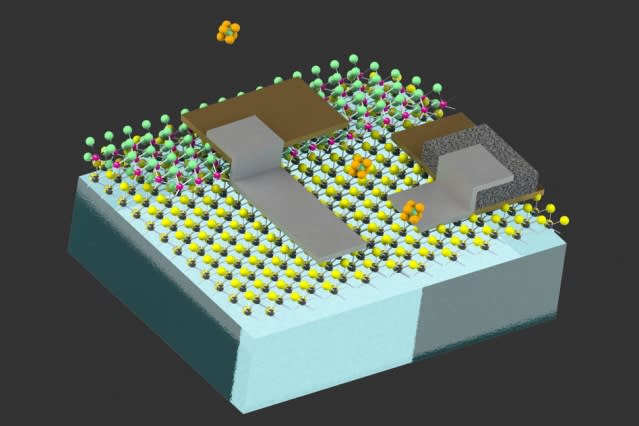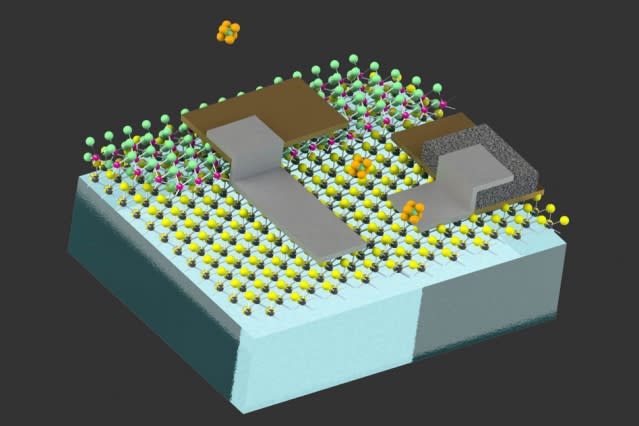Cell-sized robots could help find disease within your body
An MIT research team found a way to attach minuscule circuits to colloids.
Small robots aren't anything new, from DARPA's insect-sized disaster relief bots to diminutive inchworms powered by humidity. Now, though, researchers at MIT have likely created the smallest robots, yet: Microscopic, cell-sized electronic circuits made of two-dimensional materials that catch a ride on colloids, insoluble particles that stay suspended in liquid or even air.
Since these minuscule devices can sense their environment, store data and carry out computational tasks, they could eventually be found in oil and gas pipelines, checking for leaks. They could be deployed into the air at a chemical refinery to sense harmful byproducts, or even into the human digestive tract for early detection of illness. "We wanted to figure out methods to graft complete, intact electronic circuits onto colloidal particles," MIT's Michael Strano said in a blog post. "Colloids can access environments and travel in ways that other materials can't."
Instead of focusing on mobility like previous research efforts have, the current group made its robots more functional. The devices are self-powered, using a small photodiode that provides electricity to the robots' circuits to allow for computation and memory storage. Each little bot has tiny retroreflectors so they can be located after they've traveled through whatever substrate they need to. Don't plan on seeing these in your body anytime soon, of course, but according to Strano, they are definitely a "new field" of robotics.



